- Home
- Video Courses
- Certifications
- 300-420: Designing Cisco Enterprise Networks (ENSLD) Dumps


300-420: Designing Cisco Enterprise Networks (ENSLD) Certification Video Training Course
300-420: Designing Cisco Enterprise Networks (ENSLD) Certification Video Training Course includes 75 Lectures which proven in-depth knowledge on all key concepts of the exam. Pass your exam easily and learn everything you need with our 300-420: Designing Cisco Enterprise Networks (ENSLD) Certification Training Video Course.
Curriculum for Cisco ENSLD 300-420 Certification Video Training Course













300-420: Designing Cisco Enterprise Networks (ENSLD) Certification Video Training Course Info:
The Complete Course from ExamCollection industry leading experts to help you prepare and provides the full 360 solution for self prep including 300-420: Designing Cisco Enterprise Networks (ENSLD) Certification Video Training Course, Practice Test Questions and Answers, Study Guide & Exam Dumps.
CCNP Enterprise ENSLD (300-420): Designing IS-IS Routing
6. Describe IS-IS Operations
Describe ISIS operations on land routers. Establish the two adjacencies with SPI level one and level two IIHPDU routers on a LAN. Establish adjacency or other routers on the LAN. Broadcast mode is used for LAN and multipoint Wan interfaces. Adjacency is recognised through hellos? There are separate adjacencies for level one and level two. D-I-S creates a pseudonym and represents a land D-I-Sfor level, the two may differ. S is elected based on routes where only those with adjacent CS are eligible. The highest interface has priority over the highest SNP. There is no backup disk, and preempt is built-in. The area address is announced by Iihpdus. Separate packets announce the level one and level two neighbors. Adjacencees are formed and are based on the address that is communicated in the incoming IIH and the type of router. Level-one routers accept level-one IIHPD use from their own area and establish adjacencies with other routers in their own area. Level 2 routers accept only level 2 IIPHDUS and establish only level 2 adjacency on broadcast multi-access media that disallows it, and will flood the media. This is analogous to the designated router in OSPF. Dijkstra's algorithm requires a virtual router, which is represented by the builderdirected graph for broadcast media. Two major tasks that are performed by the Dis include creating an updated pseudonode LSP and flooding LSPs over the land. The criteria for disselection are the highest priority, where the priority value is configurable, and the highest SNPA landing. The SNPA is the Mac address. The SNPA for a one-interface is the virtual circuit identifier. Cisco? Router interfaces have the default levels one and two priorities of C four.You can configure the priority from zero to 127. The level-two dishonorlan may or may not be the same router. because an interface can have different level one and level two priorities. A selected router is not guaranteed to remain on the disk. Any adjacent intermediate system with a higher priority automatically takes over the disc roll. Because the ISI Slsdbis synchronised frequently on a LAN, this behaviour is preemptive. Giving priority to another intermediate system over the disc is not a significant issue. ISI does not use a backup disc or routers on a LAN. Establish adjacent links with the disc and with all other routers. The link state information for these two levels is distributed separately, resulting in levels one and two of the area hierarchy. each intermediate system originates. If the disc sends out LSP information on behalf of the LAN, the disc represents a pseudonode. The disc sends out the separate level-one or level-two LSPs for the pseudonote. The level one disc and the level two disc on a LAN may or may not be the same router. because interfaces can have different level one and level two priorities. LSPs on 2 points are sent as unicast, whereas on broadcast media one and level two, IIH is used to establish and maintain neighbouring adjacent systems between intermediate systems. The default Hello interval is every 10 seconds. However, the hello interval on a separate level one and level two LAN is sent periodically to Malticast. Mac addresses the multi-destination address of the intermediate systems that are in use by ISIS, the multi-destination address that is used by ISO nine five.The default hello interval for the disc is three times faster than the interval for the other router, so this failure can be quickly detected. A neighbour declares that if hellos are not received within the home, the whole time is calculated as the product of the hello multiplier and hello time. The default hello time is 10 seconds, and the default multiplier is three. The default time is 30 seconds. Unlike LAN interfaces with separate level one and level two IIHs, Two-point links have a common point-to-point IIH format that specifies whether the hello relates to level one or level two. OATH two-point hellos are sent to the unicast address of the connected router. Each intermediate system has its own LSP. These LSPs are identified by the system ID of the originator and a SPF fragment number starting at zero. If an LSP exceeds the MTU, it is fragmented into several LSPs numbered one, two, three, and so on. SLSP Flooding is a single procedure used for flooding, aging, and updating LSPs. Large PDUs are divided into fragments that are independently flooded, maintaining the level two LSPs in separate LSD beads. When an intermediate system receives Zen LSP, examinesthe checksum and discards any invalid LSPs, floodingthem with an expired lifetime age. If the LSP is valid and newer than what is currently in the LSDB, it is retained, acknowledged, and has a lifetime of 1200 seconds. The age is decremented every second until it reaches 0, at which point the LSP is considered to have expired. When the LSP has expired, kept for anextra 60 seconds before it is flooded. In aspired LSPDB synchronization, there are two types of SNPs: the complete sequence number and the PSNP. The use of SNPs differs between point-to-point and broadcast media. CSNPs and PSNPs share the same format, that is, each carries a summarised LSP action. The main difference is that CSNPs contain summaries of all LSPs in the LSDB. PSNPs contain only a subset of LSP entries. SNP packets are used for ensynchronization and reliability. The contents are LSP descriptions. PSNP is used for acknowledgment of LSPs and to request missing pieces of LSDB. CSNP is used periodically by D-I-S on land two and shows LSDB accuracy on the point-to-point link when the LUMS are up. Separate CSNPs and PSNPs are used for levels one and two. Adjacencies Adjacent ISIS routers exchange CSNPs to compare their LSDBs in broadcast subnetworks. Only the D-I-S transmits CSNPs. Adjacent neighbours compare the LSP summaries that are received in the CSNP with the contents of their local LGB to determine if their LSDBs are synchronized, or, in other words, if they have the same copies of LSP and the appropriate routers for the appropriate levels and areas of routing. The D-I-S on a land periodically checks CSNPs every 10 seconds to ensure LSDB accuracy. If there are too many LSPs to include in one CSNP, the LSPs are sent in ranges. The SNP header indicates the starting and ending LSPITE. If all LSPs in the range fit ASNP, the range is set to the default values. In the example, router RR One compiles a list of LSPs with its topology cable and realises that it is missing one LSP. Therefore, it sends a PSNP to the disc to request the missing LSP. The disc reissues only this missing LSP 77, and Router R1 acknowledges it with a PSNP. Adjacent ISI's routers use PSNs to acknowledge the receipt of LSPs and to request transmission of missing or newer LSPs on point-to-point networks. CSNPs are sent to ants when the link comes up to synchronise the LSDBs. Afterward, LSPs are sent for discology changes, and they are acknowledged with a PSNP. The example in the figure shows what is on a point-to-point link when a link failure is detected. When a link fails, router R-2 notices the failure and issues a new LSP noting the change. Router R One receives the LSP, stores it in its topology table, and sends a PSNP back to R Two to acknowledge the receipt of the LSPs. Design considerations do not directly support NA networks. When managing NBMA networks such as frame relay and ATM, use a broadcast or point-to-point model depending on your network characteristics. The use of hub and spoke over NBA useful mesh networks is a special case to consider when managing ISI in topologies. Design considerations from the hierarchy perspective suggests uselatISI S design level one only and leveltwo only and a hierarchical ISI Sding. Depending on the size and requirements of your network, you will consider building a flat, non-hierarchical ISI S MUX or a hierarchical design. When talking about Lapped ISI design, the design involves only one area, so two-level routing is not really rigorous. This is the simplest design but does not scale as well as the hierarchical design. For this reason, it is always beneficial to design your network with hierarchy in mind, even if it will only be used informally. In hierarchical ISIS design, there are multiple areas to consider and position the backbone within the network. The use of level two routing is crucial in hierarchical networks. Route summarization toward the core backbone is also very important in designing a hierarchical ISIS network. Therefore, it requires very careful design of the IP addressing scheme within areas and globally for the whole domain. Another reason for using summarizationists tohide instabilities within a problem regionfrom the rest of the network. When building the network from the ground up, it is very important to keep these key points in mind because after the network has been put into operation, it might be hard to make big changes and you might be forced to make concessions and workarounds, making your network needlessly more complex. As a result, NBM was used as a hub and spoke. An example is the NBMA network and how to address IIH adjacency issues. Because the router RTA interface is defined as a broadcast in IS, it will send NIIH. The other routers are configured as point-to-point subinterfaces. Afore will send the point-to-point IIH packets. As a result, the adjacencies will not form, and no routing information will be exchanged in a frame relay NBMA network outer point-to-point interface. Others have point-to-point subinter faces.The problem is that there is a hello-type mismatch and no adjacent. The solution is to configure point-to-point subinterfaces on router RTA with different subnets and full networks in NBMA networks such as an ATM cloud in which all routers are fully meshed with worker channels. The full mesh allows the cloud to be modelled as a broadcast link and configured to work with IISIS. The problem with this model is that the full-mesh ATM cloud does not have the complete broadcast capability of multipoint broadcast technology such as Ethernet. When any of the VCs fail to transmit, any connectivity is lost. Breaking the flooding model with flooding routing information as the main concern in any change in the network entails an LSP storm with mesh groups and will reduce the amount of flooding in a full mesh network by sending LSPs on selected links. Only a large, full mesh can result in potential performance and scalability issues. Excessive flooding in environments can be limited by grouping subinterfaces into mesh groups. Mesh groups are desired for optimising the flooding of large NBMA clouds with many point-to-point connections. The bay idea behind mesh groups is that each member of the group does not retransmit LSPs that are received from another member of the group to other members of the same group because they would have already received copies. However, speeds that are received from nonmember routers are flooded to all members of the mesh group and other adjacent nonmember routers with a flat ISI S design. A small and simple ISI-S network can be visually deployed as a single-area non-hierarchical network. Even then, you will most probably determine upfront when it will be necessary to migrate to a hierarchical topology. Moving to a hierarchical model depends on many factors, such as, for example, the number of routers, geographical dispersion, network link types, link stability, and so on. A non-hierarchical design is only appropriate when a single area is large enough and when there is a low number of routers. There is no benefit to running both level one and level two in a single area design. User-only level-two routers everywhere, which may make future implementation of level-one routers easier, show backbone continuity from the start. By moving to a hierarchical topology with multiple AS, you can contain the flooding of LSPs within the area. This situation does not prevent you from configuring some areas as Level 2 only in certain designs, which can save you CPU processing power if required. Because having a single area defeats the purpose of having two-level routing, you can deploy your Nook as an all-Level One or all-Level Two network. The recommended way to deploy these networks is to deploy a Level 2 network only from the start, which makes future area editions easier and ensures backbone connectivity from the start. On Cisco routers, the behaviour is that both Level One and Level Two routing are built by default to make your network use only Level One or Level Two routers. Additional configuration is needed on a per-router basis. Figure 1. Hierarchical design shows an example of building an ISIS hierarchical model on top of the classic network topology, including the core, distribution, and access layers. The hierarchical design is based on the classic three-layer architecture: access layer Level One routers, distribution layer Level One and Level routers, and core layer Level Two only routers that will connect to many areas. The core link prizes Level 2-only devices are in Area 1. Area two is composed of the distribution and an axias network. Core-only level-two LSPs are flooded between the core and distribution layers. The access layer devices are in the same area as the distribution routers, and they receive only level one LSPs with the distribution routers. This network design has benefits, with one being the protection of the core layer from instabilities within the access layer. You do not link to claps in the access layer. To influence ISIS PF processes in the core, the IDS needs to be properly designed to allow for the most rational route summarization. The exit covers only one area that is attached to Level 2, Area 1, but in reality you attach many more areas in the same manner. The backbone in this scenario is composed of all Level 2-capable devices, including Level 1 and Level 2. Once in Area Two, one of the main factors determining how well nigpp scales is the network architecture's addressing layout. An improper addressing scheme from the summarization perspective, which is in the design of your network and in the early phases of the implementation, might cause scaling problems later on. The network could have difficulties scaling further, and the devices might end up using more hardware resources than necessary. Summarization rules can be summarised from Level One to Level Two by following internal routes. If summarization is used, all Level One and Level Two routers in an area should be summarising into the backbone. Internal roots cannot be summarised at Level One. External roots can be summarised at Level One routerization, which enables more detailed topology information to be hidden and sets a boundary limit for containing any Nook changes. This reduces the number of routers that are affected by any of these changes. For IP, you can summarise only native IS routes into Level Two from the Level One database; it is not possible to summarise ISI's internal routes at Level One. Although it is possible to summarise externally redistributed roots at level one, the key concepts for summarising roots that follow internal roots can be redistributed and summarised at level two. Level two summarization should be configured on level one and the Level 2 router, which injects level one routes into level two. All level one and level two routes in an area must summarise into the backbone if summarization is used. If one of them is advertising more specific routes, all the traffic from the backbone will be sent toward this router. Because of the longest match routing, internal routes cannot be summarised at level one. Because this action is not permitted by the protocol, it is possible to summarise externally redistributed routes at level one. Summarization Example In this example, the core is protected by instabilities in the attached areas. Internals can be summarised from level one to level two because only the triggered route of all distribution and access networks, ten one five, oslash two, makes its way to the ISIS databases of the core routers in ISIS. If summarization is used, all level-one and level-two routers in an area should be summarising into the backbone. Internal routes cannot be summarised at level one. External redistributed routes can be summarised at level one. Summarize the agreement with distribution and access the default route from the distribution to the core via the access networks. You can also summarise in a direction at the distribution layer, from the core downstream toward the access layer. Typically, ACT devices that attach to a distribution layer or directly to the core require only a default route. In other scenarios, such as dual homing, it may be necessary to take appropriate measures to avoid any potential for suboptimal part selection. In the example, you can see that practically all core prefixes are combined into one advertisement, the default route. This is shown as a prefix of zero.
7. Examine Integrated IS-IS for IPv6
SIS added multitepology support to ISI to increase flexibility in ISI's deployment. Virulel stack environment IPV-6 extends support for the IPV-6 family. In addition to OSI and IPV four. To introduce IPVs routing, two TLVS are added to introduce IPVs routing.IPV six reachability TLV describes network reachability options equivalent to IPV 4. Internal and external reachability TLVS must contain the linked local address for LSPs, which must only contain the OnLink locals. IPV-6 enabled routers promote a new protocol for IPV-6 nlpid hexadecimal. a multi-topology extent for separate SPF instances, one for IPV 4 and one for IPV 6. ASI topology is one SPF instance per IPV 4 and IPV 6. The supported nlpids are listed in the proportional support for E LV type codeone two nine. All IPV 6-enabled routers advertise. An nlpid value of hexadecimal 82 is hexadecimal CC 204. Multitopology provides some flexibility when you transition to IPV 6. A separate topology opt for bothIPV four and IPV six networks. because some links may not be able to carry IPV 6. ISIS specifically keeps track of these links, minimizing the possibility for traffic. B black hole single topology, where there is one SPF instance for Boev four and IPV6 also remains a possibility, but the network must be homogeneous. The same links must carry IPV 4 and IPV 6 simultaneously. S single topology restrictions when you migrate froma purely IPV four Emma to a dualstack environment, a discrepancy in supported protocols wouldcause adjacent cease to fail. The intermediate system performs consistency checks on Hello packets and will reject Hello packets that do not have the same set of configured address families. For example, a router running ISI S with IPV4 and IPV6 will not form an adjacency with a router running ISI S for IPV or IPV6 only to facilitate a seamless upgrade. The engineer may disable consistency during the upgrade to maintain adjacencies that are active even in a heterogeneous environment. Asyptopology S uses the same SPF for both; it is unsuitable for scattered IPV-6 support in the existing IPV-4 ISI-S network. IPV four and IPVs six topologies mustmatch exactly ISI's only forms with similarlyconfigured routers except level two only. Interfaces cannot join two IPV six areaas via an IPV four only area. Level two adjacencees will form, but IPVs six trafficwill black hole in the IPV four area. Suppressing adjacency checking on intraarea links is primarily done during the transition from single topology to multiple topologies. Imagine that a service provider is integrating IPV6 into a network and it is not practical to shut down the entire provider router set for a coordinated upgrade without disabling decency checking. because routers were enabled for IPV six. For IPV six, adjacencies would drop with IPV four only routers, and IPV four routing would be severely impacted by consistency. Check suppression. IPV 6 can be turned up without causing any problems. IPV four reachability as in any Is networkdesign, level two backbone routers must be contiguous. IPV six adjacency checks are not done on level two links in the right diagram. Level-two routers are not contiguous for IPV six.Therefore, this example is an incorrect network design. The correct example would be when the lever two-routers are contiguous for both IPV-4 and IPVs. This situation is called a routing hole. In the example on the right, adjacencies will cross-layer two links between the three areas. However, the IPV-6 network is hindered by the inability of area 3 to carry IPV-6 traffic. Because ISIS is managing a single topology, the routers will believe that a path for IPV 6 exists across area 3, but all of the six traffic that is sent via this path will fail. Multitepology ISI S for IP 6 is multitypology for IPV 6. This removes limitations from net design when it is running ISI S for both IPV 4 and IPV 6. It runs two SPF instances and allows the use of different metrics for IPV 4 and IPV 6. Transition mode allows for easier migration from a single topology to a multitypology environment. Multitopology support for IPV 6 allows ISIS to maintain a set of independent topologies within a single area or domain. This mode removes the restriction that all ACS in which S is configured must support an identical set of network address families. It also removes the restriction that all routers in the ISI must support the same set of network layer address families. Multiplications are performed for each configured topology. Therefore, it is sufficient that connectivity exists among a subset of the routers in the area for a given network address family to be routable. When multitepology support for IPV-6 is used, use the wide metric because the TLVS that you advertise IPV-6 information in LSPs are defined to use only wide metrics. Alters in the area or domain must use the same type of IPV6, which can support single or multipology. A router that is operating in multitepology mode will not recognise the ability of a router in topology mode to support IPV 6 traffic, which will lead to routing holes in the IPV 60 transmission. To transition from single topology support to the more flexible multitepology support, a topology transition mode can be deployed. A network can operate in a single topology using the multitopology transition mode. sIPV-6 support mode to continue to work while upgrading tours to include multi-topology sIPV-6 support while in transition mode. Types of TLVS are sent in LSPs for all configured IPV addresses, but the router continues to operate in single topology mode. After all, routers in an area or domain have been upgraded to support multi-topology IPV6 and are operating in transition. Transition mode can be removed from router configuration durations.
CCNP Enterprise ENSLD (300-420): Designing BGP Routing
1. Designing BGP Routing
Hello and welcome to designing BGP routing. This video will give you an overview of the topics that are discussed, as well as the detail and recommendations provided to address the challenges of scalability regarding the BGP routing protocol. The first topic explains the border gateway protocol, full mesh topology, and its impact on scalability and network manageability. You are then introduced to two options for scaling, which are root reflector federations. To fully grasp the following topics, you are provided with some BGP design details. For example, various BGTP peer types are described. You will learn what a route reflector is and how they reflect or re-advertise learned routes, along with some additional terms such as client and nonclient. There is a discussion with recommendations on how session reduction is accomplished when you design and configure to select the most suitable router, reflector, clients, and nonclients. This section describes how BGP confederations divide the autonomous system into multiple sub-autonomous systems and use the sport attribute to its information in BGP routes, as well as configure root reflectors within these sub-autonomous systems to prevent loops and improve scalability. The next topic talks about how redundant routereflectors are typically used to provide redundancy. This type of implementation could potentially cause loops; therefore, the concept of clusters was introduced to address the situation. Whenever you read the various recommendations provided in Epic, make sure you take note of the considerations and caveats like this one in order to understand the implications and impacts of your configurations. The topic continues to describe how root reflector clusters prevent loops, depending on how the designer explicitly configures the clusterid. Make sure to take note that based on how you configure the clustered, potential issues could arise if certain BGP sessions go down. The discussion takes you deeper into the design recommendations. Regarding resiliency based on how the rooted reflectors are configurable, you have a nonredundant cluster environment at a single point, so failure is a situation you want to avoid. The following topics discuss some loop prevention techniques such as the hierarchical design of reflector clusters and split horizons. There is a fairly detailed discussion regarding the ways routing updates are exchanged. They describe how the cluster list attribute offers a loop avoidance mechanism. Pay attention to the recommendations given here, as this is a critical piece in loop prevention. The design recommendations are provided regarding a Ccluster as well as the overlapping cluster design. Now, deviating from any of the suggested designs or configurations could potentially result in missing routes, unnecessary duplicates of updates to the clients, suboptimal routing, or even potential broken networks. There is a brief discussion regarding several connectivity options for its service providers, such as dual-homed multihoming and dual-homed multihoming. Considerations for high availability and load sharing are provided that dictate which one or combination of options will be the ingress and egress. Path selection, load balancing, and traffic control are also discussed. Also, as it introduces features like equal cost and nonequal cost path selection, splitting the network address rate, and a global load balancing protocol, Integrating features of the underlying internal gateway protocol provides ideas for resiliency. As you can see, this section provides not only extremely helpful recommendations and suggestions, but also topics that take you through the mechanics of BGP. That is our overview for designing BGP routing.
Student Feedback
Download Free Cisco ENSLD 300-420 Practice Test Questions, Cisco ENSLD 300-420 Exam Dumps
| File | Votes | Size | Last Comment |
|---|---|---|---|
| Cisco.pass4sure.300-420.v2024-03-16.by.wangjing.87q.vce | 2 | 2.6 MB | Mar 31, 2024 |
| Cisco.braindumps.300-420.v2020-04-29.by.maya.86q.vce | 3 | 2.39 MB | Oct 05, 2020 |
Similar Cisco Video Courses


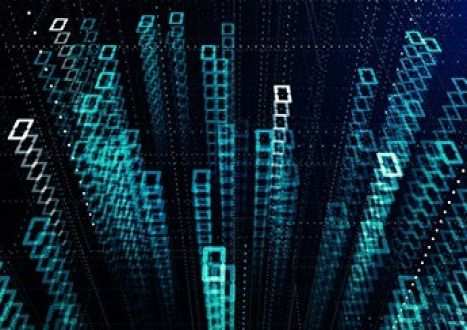
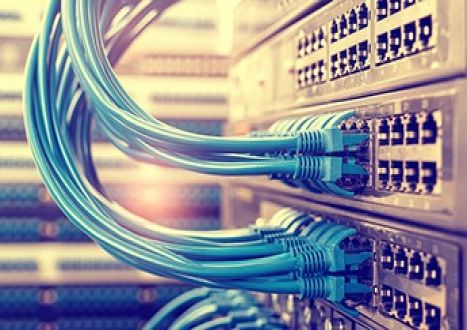




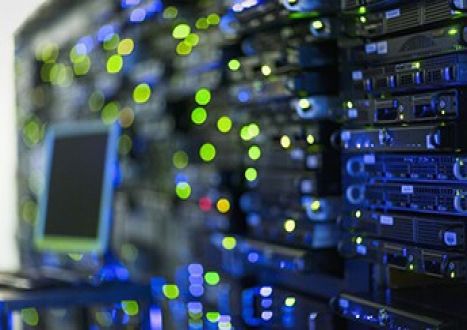




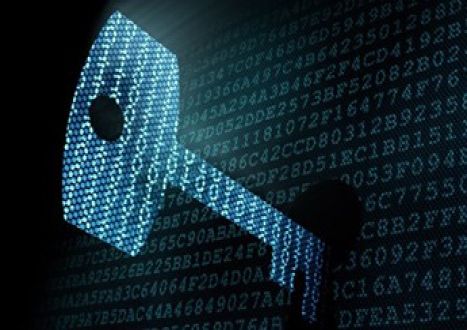
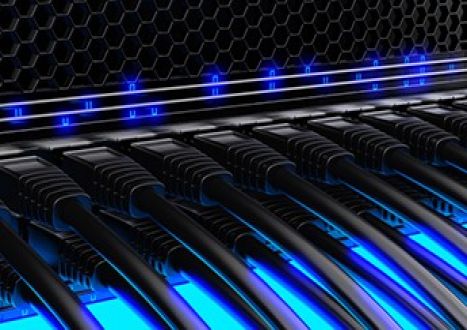




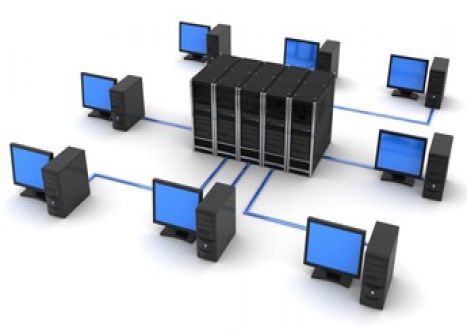



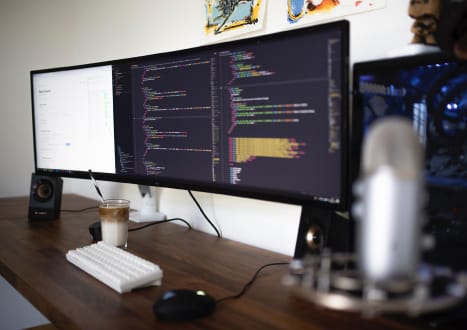






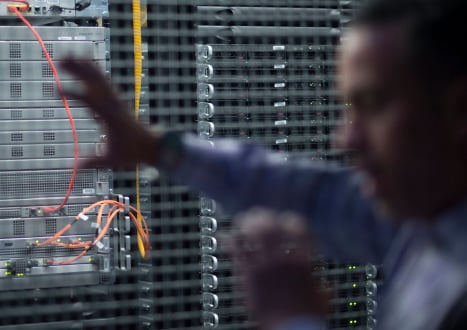

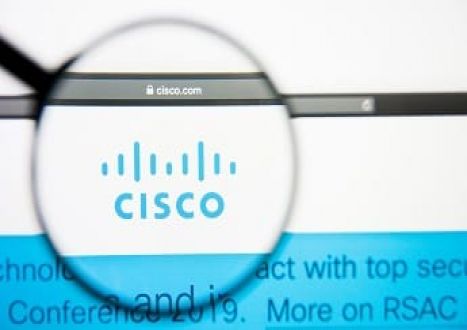
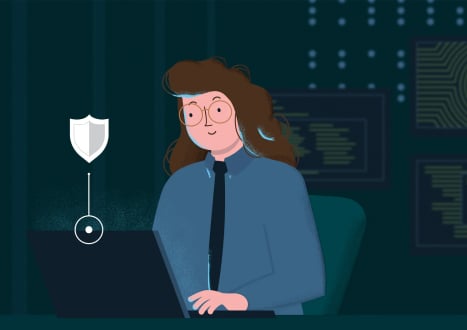
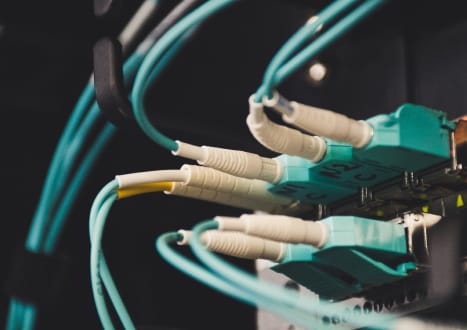
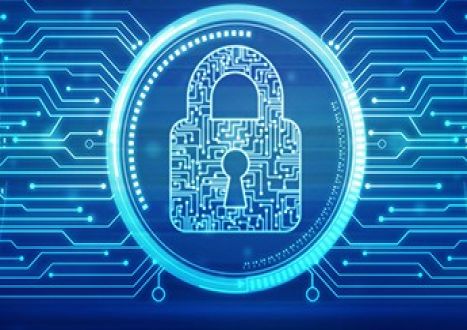
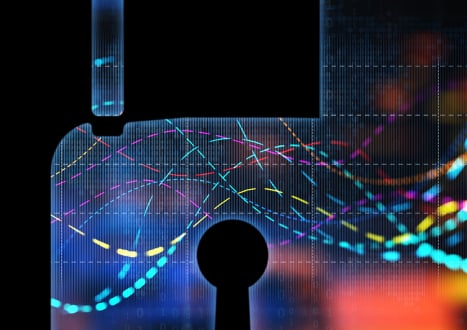
















Only Registered Members Can Download VCE Files or View Training Courses
Please fill out your email address below in order to Download VCE files or view Training Courses. Registration is Free and Easy - you simply need to provide an email address.
- Trusted By 1.2M IT Certification Candidates Every Month
- VCE Files Simulate Real Exam Environment
- Instant Download After Registration.
Log into your ExamCollection Account
Please Log In to download VCE file or view Training Course
Only registered Examcollection.com members can download vce files or view training courses.





Add Comments
Feel Free to Post Your Comments About EamCollection's Cisco ENSLD 300-420 Certification Video Training Course which Include Cisco 300-420 Exam Dumps, Practice Test Questions & Answers.